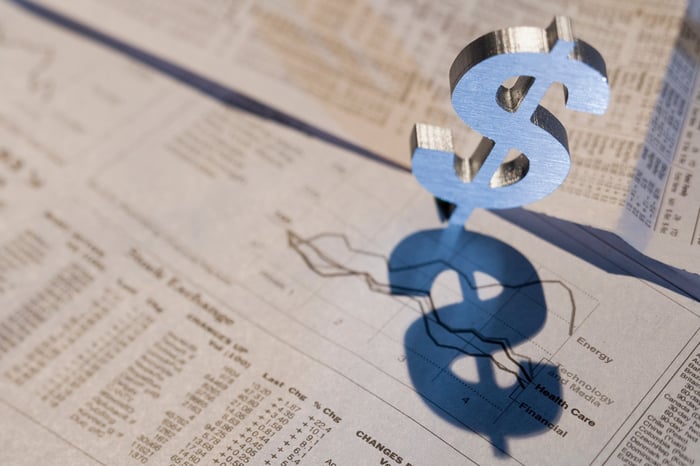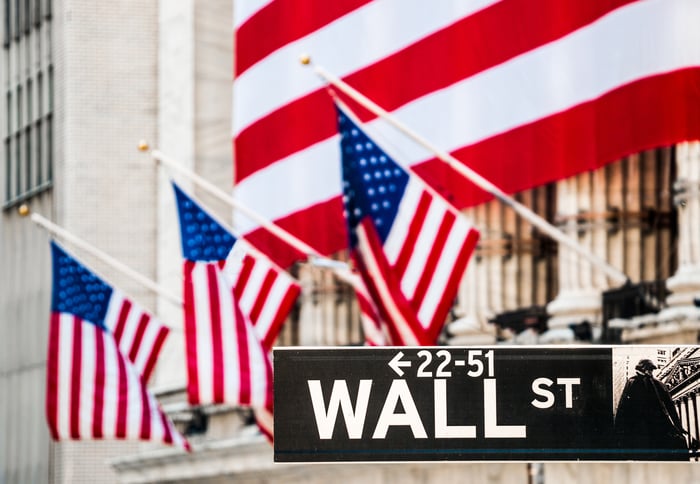It's been a challenging year for Wall Street, and especially for retail investors. The uncertainties created by the coronavirus disease 2019 (COVID-19) sent the U.S. economy into a tailspin and cost the benchmark S&P 500 (^GSPC -0.88%) 34% of its value in just a 33-calendar-day stretch. For some context, bear market declines of at least 30% in the S&P 500 have historically taken an average of 11 months to materialize.
Even though the S&P 500 has recouped everything that was lost during the coronavirus crash (and some), volatility remains well above its five-year average, as measured by the CBOE Volatility Index. This heightened volatility may well be keeping investors from putting their money to work for fear of losing some or all of their principal.
But what if I told you there is a guaranteed way to make money in the stock market, and that it doesn't involve owning bonds.

Image source: Getty Images.
The one investment that's never let long-term investors down
As investors, we're taught one simple truth: Nothing is guaranteed. No matter how much a stock seems like a sure thing, there can always be a competitor, fiscal policy change, Act of God, or X factor that completely screws up your investment thesis. This is one of the main reasons why diversifying your investment portfolio and buying into baskets of stocks is a smart move.
We've watched as great companies like insurer UnitedHealth Group, warehouse club Costco Wholesale, and electric utility NextEra Energy have delivered 11 consecutive years (and counting) of positive total returns, including dividends paid. Yet none of these companies is guaranteed to go make you money over the long run.
There is, however, one investment that has an immaculate track record of success, and also has the full support of billionaire investing icon Warren Buffett. I'm talking about the SPDR S&P 500 ETF Trust (SPY -0.87%).
The SPDR S&P 500 ETF is an exchange-traded fund (ETF) that nearly mirrors the performance of the S&P 500. Fund managers for this ETF charge a very nominal 0.09% annual fee on invested capital, with investors gaining access to all 500 companies in the index from a single security.

Image source: Getty Images.
Similar to other broad-market indexes, the S&P 500 is constantly replacing chronic underperformers whose market caps fall into small-cap territory with companies poised to outperform. One of the many criteria used to gauge inclusion into the S&P 500 is profitability. Thus, investors in the SPDR S&P 500 ETF know that the overwhelming majority of companies contained in the index will be time-tested and making money.
But it's the rolling 20-year total returns (i.e., including dividends) of the S&P 500 that really tell the tale.
Is 101-for-101 convincing enough?
Earlier this year, financial market and economic research firm Crestmont Research released data on the 20-year rolling returns for the S&P 500 over a 101-year stretch (1919-2019). When I say "rolling returns," I'm referring to the average annualized total return for the S&P 500 over a defined period that ends in a specific year. For example, the rolling 20-year change in 1919 takes into account the average annual total returns of the S&P 500 between 1900 and 1919 (a 20-year period). Likewise, the total return for 1985 takes into account the average annual total return for the index between 1966 and 1985. Crestmont examined the rolling 20-year total returns for all 101 years between 1919 and 2019.
The result? Every single year had a positive annualized total return. Every single year! Put in another hypothetical context, no matter when you bought into an S&P 500 tracking index since 1900, you would have made money as long as you held onto your investment for 20 years.

Image source: Getty Images.
What's even more impressive about the S&P 500's rolling returns is that they're rarely marginal. Only two times over the past 101 years has the rolling 20-year total return of the S&P 500 been under 5%. By comparison, more than 40% of the time investors have basked in a rolling 20-year total return of at least 10.9%. In fact, the median 20-year annualized total return is 8.9%, which would allow investors to double their money with dividend reinvestment in just over eight years.
I get it -- the stock market can be a scary place at times with equities being whipsawed by unforeseen events. But history is no liar. If you buy the SPDR S&P 500 ETF and hang onto it for 20 years, you're going to make money.





